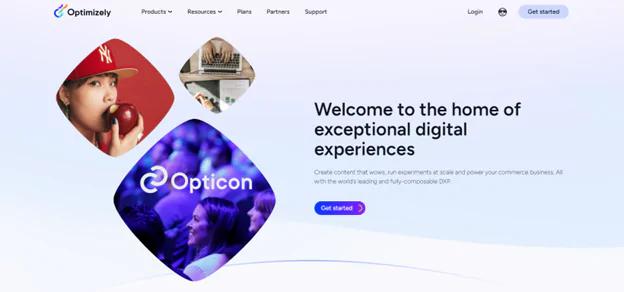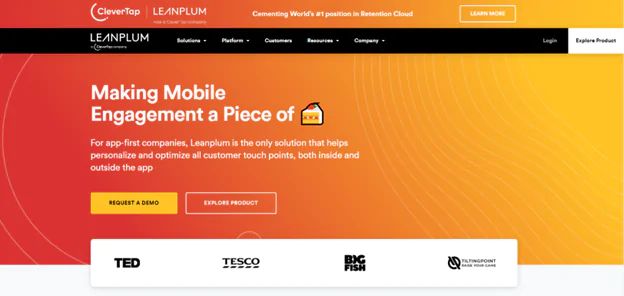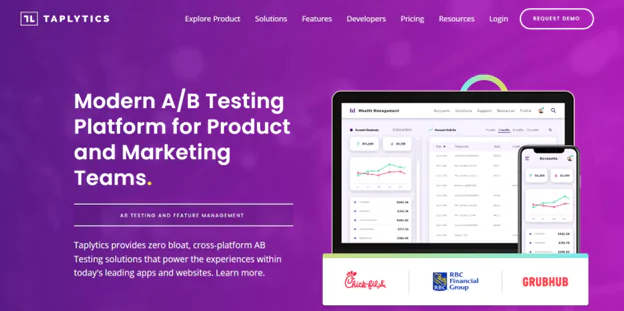In today’s fast-paced and competitive digital landscape, optimizing user experience is crucial for mobile app developers looking to stand out from the crowd. With so many users demanding seamless functionality and intuitive design, it’s essential to continuously test and refine your app’s performance. That’s where AB testing tools come in. These powerful tools allow developers to experiment with different variations of their apps and gather valuable insights into user behaviour.
What is A/B Testing?
A/B testing, also known as split testing or bucket testing, is a method used in marketing, web development, and other fields to compare two versions of a webpage or app to determine which one performs better. The purpose of A/B testing is to make data-driven decisions and optimize the user experience, conversion rates, and overall effectiveness of a product or service.
Understanding the AB Testing Process
Before diving into the specific AB testing tools, it’s essential to understand the general process of AB testing. The AB testing process typically involves the following steps:
Define the goal: Start by clearly defining the goal of your AB test. What specific aspect of the app do you want to improve? Is it the onboarding process, the checkout flow, or the overall user interface? Defining a clear goal will help you stay focused and measure the success of your test accurately.
Create test variations: Once you’ve defined your goal, create different variations of your app to test. This can include changes to the layout, color scheme, button placement, or any other element that you believe can impact user experience. It’s important to only test one variation at a time to accurately measure its impact.
Split your audience: Divide your audience into different groups or segments. The size of each segment will depend on the size of your user base and the statistical significance you want to achieve. Ensure that the segments are representative of your target audience to get accurate results.
Run the test: Launch your test and monitor user behavior. Collect relevant data such as click-through rates, conversion rates, session duration, and any other metrics that align with your goal. It’s important to give your test enough time to gather sufficient data for analysis.
Analyze the results: Once you have collected enough data, analyze the results to determine which variation performed the best. Look for statistically significant differences in user behavior between the variations. This analysis will help you understand which elements of your app are driving positive user experiences and which ones need improvement.
Implement the winning variation: Based on the results of your analysis, implement the winning variation as the default version of your app. However, the optimization process doesn’t end here. It’s important to continue testing and iterating to further enhance user experience and drive continuous improvement.
Top 9 Essential A/B Testing Tools for Mobile App Developers
Now that we understand the importance of AB testing and the general process involved, let’s explore nine essential AB testing tools that every mobile app developer should consider incorporating into their workflow.
Tool 1: Firebase A/B Testing
Firebase A/B Testing, part of the Firebase platform by Google, is a powerful tool that allows developers to run experiments and optimize their app’s user experience. With Firebase A/B Testing, developers can test different variations of their app and measure how these variations impact user behavior. The tool provides a simple and intuitive interface, making it easy for developers to set up experiments and analyze the results. Additionally, Firebase A/B Testing integrates seamlessly with other Firebase products, allowing developers to leverage the full suite of Firebase features for app development and optimization.

Supported Platforms: Mobile apps only.
Features: Google Analytics, Firebase Remote Config, Notification messages, AdMob, and Remote Config personalization.
Pricing: No-cost and Custom Cost Plans
Tool 2: Optimizely
Optimizely is a popular AB testing tool that empowers developers to experiment with different variations of their apps and optimize the user experience. With Optimizely, developers can create experiments without writing a single line of code, thanks to its visual editor and drag-and-drop interface. The tool also offers advanced targeting capabilities, allowing developers to personalize experiments for specific audience segments. Optimizely provides comprehensive analytics and statistical analysis, enabling developers to make data-driven decisions and iterate on their app’s design and functionality.

Supported Platforms: Web and Mobile App
Features: Run many types of A/B tests, Reliable results with stats engine, Personalize content, AI predictive audiences
Pricing: Personalized pricing packages tailored to your specific needs
Tool 3: Apptimize
Apptimize is a comprehensive mobile optimization platform that offers a range of features, including AB testing, feature flagging, and over-the-air updates. With Apptimize, developers can create and run experiments to test different variations of their app and measure the impact on key metrics. The tool also provides advanced targeting options, allowing developers to deliver personalized experiences to specific user segments. Apptimize’s intuitive interface and real-time analytics make it easy for developers to gain insights and make informed decisions to improve their app’s user experience.

Supported Platforms: web, mobile, mobile web, OTT, and in-store.
Features: cross-platform A/B testing, Consistent Customer Experiences, feature flags,
Pricing: 30-Day Full-Feature Trial and Custom Price
Tool 4: SplitMetrics
SplitMetrics is a specialized AB testing tool for mobile app store optimization (ASO). ASO is vital for mobile app success, as it improves app discoverability and conversion rates. SplitMetrics allows developers to create and test different variations of their app’s store listing, including screenshots, app icons, and promotional texts. By running experiments on different variations, developers can identify which elements of their app’s store listing resonate best with users and optimize for higher conversion rates. SplitMetrics provides detailed analytics and insights to help developers make data-driven decisions and improve their app’s visibility and conversion rates in the app stores.

Supported Platforms: App Store Optimization (ASO) for iOS and Android apps.
Features: A/B testing for app store pages and app features, Market insights, and competitor analysis
Pricing: SplitMetrics does not provide pricing information on its website. Interested customers can contact them for a quote.
Tool 5: Leanplum
Leanplum is a comprehensive mobile engagement platform that offers AB testing as one of its core features. With Leanplum, developers can create and run experiments to test different variations of their app’s user interface, messaging, and user flows. The tool provides powerful targeting capabilities, allowing developers to deliver personalized experiences based on user demographics, behavior, and preferences. Leanplum also offers advanced automation and optimization features, enabling developers to automate their testing and optimization processes and drive continuous improvement in user experience.

Supported Platforms: Website & Mobile
Features: Personalization, Mobile optimization, App editing, User segmentation, etc.
Pricing: – Contacting the company for the pricing
Tool 6: Taplytics
Taplytics is a user-centric product optimization platform that empowers developers to create and run experiments to improve their app’s user experience. With Taplytics, developers can test different variations of their app’s design, messaging, and feature set to understand how users respond to different changes. The tool provides a visual editor and drag-and-drop interface, making it easy for developers to create experiments without the need for coding. Taplytics also offers advanced targeting and segmentation capabilities, allowing developers to deliver personalized experiences to specific user segments and drive higher engagement and conversion rates.

Supported Platforms: Website, Mobile, OTT, and server-side deployments.
Features: Cross-Platform A/B Testing, Feature Flags for Modern Development, 50% Less Engineering Time
Pricing: STARTS AT $500/MONTH, Pro Plan, Enterprise Plan, Custom Plan
Tool 7: VWO
VWO (Visual Website Optimizer) is a versatile optimization platform that offers AB testing as one of its core features. While primarily focused on web optimization, VWO also provides mobile app optimization capabilities. With VWO, developers can create and run experiments to test different variations of their app’s design, layout, and messaging. The tool offers a visual editor and code editor, giving developers the flexibility to create experiments using either approach. VWO also provides advanced targeting and segmentation options, enabling developers to deliver personalized experiences based on user behavior and demographics.

Supported Platforms: Web and App
Features: A/B testing, Custom Integrations, Custom Dimension in Segmentation, heatmaps, etc.
Pricing: full-featured trial Free for 30 days. Three plans are available based on the small, mid-sized, and large teams enterprises.
Tool 8: Adobe Target
Adobe Target is a powerful A/B testing and personalization platform that allows businesses to deliver targeted experiences to their customers. With Adobe Target, businesses can test different variations of their website or app content, such as headlines, images, and calls-to-action, to determine which version performs better and drives higher conversions. The platform also offers advanced targeting capabilities, allowing businesses to personalize content based on user behavior, demographics, and other data points. Adobe Target is compatible with various platforms, including websites, mobile apps, and email campaigns, making it a versatile solution for businesses of all sizes.

Supported Platforms: Web and App
Features: A/B testing, Personalization, Multichannel targeting, Advanced Analytics, and Integration with Adobe Experience Cloud
Pricing: Adobe Target offers flexible pricing options based on the specific needs and scale of your business. Pricing details can be obtained by contacting Adobe directly or visiting their website.
Tool 9: Ab Tasty
Ab Tasty is an A/B testing platform that helps businesses optimize their websites and improve conversion rates. With a user-friendly interface and powerful features, Ab Tasty allows users to create and run experiments, track results, and make data-driven decisions to enhance their online presence.

Supported Platforms: Web and App
Features: A/B testing, Multivariate testing, Personalization, Targeting and segmentation, and Analytics and reporting
Pricing: Pricing for ab tasty is available upon request and is based on the specific needs and requirements of each business.
Benefits of AB Testing for Mobile App Developers
A/B testing offers numerous benefits for mobile app developers, helping them make data-driven decisions and improving the overall performance and user experience of their apps. Here are some of the key advantages:
Data-Driven Decision Making: A/B testing provides concrete data and insights into how users interact with different variations of the app. Developers can use this data to make informed decisions based on real user behavior rather than relying on assumptions or intuition.
Optimized User Experience: By testing different app elements such as layouts, buttons, colors, and content, developers can identify the most effective combination that enhances the user experience. This leads to increased user satisfaction and engagement.
Improved Conversion Rates: A/B testing allows developers to optimize conversion funnels and increase the likelihood of users taking desired actions, such as signing up, making purchases, or completing a specific task within the app.
Reduced Bounce Rates: By identifying and addressing pain points or user experience issues, A/B testing can reduce bounce rates and encourage users to stay longer within the app, exploring its features and content.
Faster Iteration and Updates: A/B testing enables developers to quickly test and iterate on new features or changes, helping them roll out improvements more efficiently without major risks.
Personalization and Segmentation: A/B testing allows developers to create personalized experiences for different user segments. By tailoring app elements to specific user groups, developers can enhance relevance and engagement.
Cost-Effectiveness: Running A/B tests can be more cost-effective than making sweeping changes to the entire app without knowing the potential impact. Developers can target specific areas for improvement, reducing resources and development time.
Competitive Advantage: By continuously optimizing their app through A/B testing, developers can stay ahead of competitors, meet user expectations, and retain more users in a competitive mobile app market.
Minimize Risk of Changes: A/B testing mitigates the risks associated with significant changes to the app. Instead of implementing a full-scale redesign, developers can test elements gradually and validate their impact before making permanent updates.
Enhanced App Store Performance: For mobile apps, A/B testing can improve app store conversion rates by testing various app icons, screenshots, and descriptions to identify what resonates best with potential users.
Conclusion
In today’s competitive app market, optimizing user experience is crucial for mobile app developers. AB testing tools provide developers with the ability to experiment with different variations of their apps, gather valuable insights, and optimize user experience.
Improve user engagement and boost app performance with expert A/B testing solutions for your mobile app. Contact Getra Innovation today for cutting-edge A/B testing services and unleash the full potential of your app.





